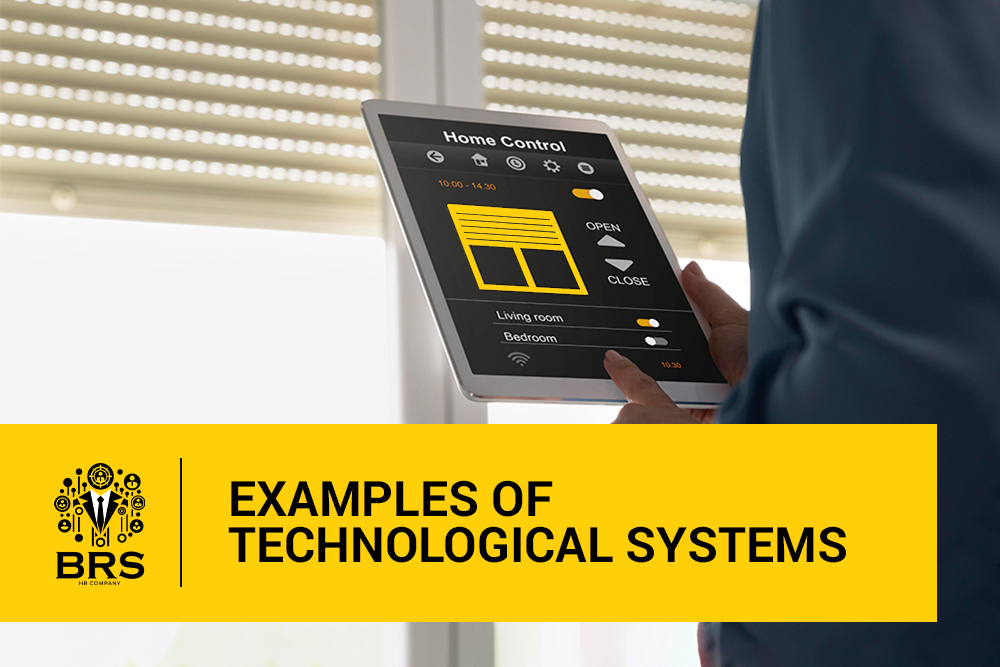In today’s rapidly evolving world, technological systems have become an integral part of our daily lives. These systems are designed to make our lives easier, more efficient, and more connected. But what exactly are examples of technological systems, and how do they impact our day-to-day existence? Let’s explore some of the most prominent examples of technological systems that are shaping our world.
Voice-Controlled Assistants
One of the most ubiquitous examples of technological systems in recent years has been the rise of voice-controlled assistants. These digital helpers, such as Amazon’s Alexa, Apple’s Siri, and Google Assistant, have become our constant companions, ready to assist us with a simple voice command.
Voice-controlled assistants are prime examples of technological systems that combine artificial intelligence, natural language processing, and cloud computing to create a seamless user experience. They can perform a wide range of tasks, from setting reminders and alarms to controlling smart home devices and even making purchases online.
Imagine having a personal assistant that never sleeps, never takes a day off, and is always ready to help you with any task. That’s exactly what voice-controlled assistants offer. They’re like having a knowledgeable friend at your beck and call, ready to answer questions, provide information, or simply entertain you with jokes and trivia.
These examples of technological systems have revolutionized the way we interact with technology. Instead of typing commands or navigating through menus, we can simply speak our requests, making technology more accessible and user-friendly than ever before. Voice-controlled assistants are constantly learning and improving, adapting to your preferences and habits to provide a more personalized experience over time.
As these systems continue to evolve, we can expect even more advanced features and capabilities. From more natural conversations to more complex task completion, voice-controlled assistants are poised to become even more integral parts of our daily lives.
Automated Lighting and Climate Control
Another fascinating example of technological systems that has gained popularity in recent years is automated lighting and climate control. These smart systems allow you to control and optimize your home’s lighting and temperature with minimal effort, enhancing both comfort and energy efficiency.
Automated lighting systems can be programmed to turn on and off at specific times, respond to motion sensors, or be controlled remotely via smartphone apps. They can even adjust the color temperature and brightness of your lights to match your circadian rhythm, promoting better sleep and overall well-being.
Climate control systems, on the other hand, use advanced sensors and algorithms to maintain optimal temperature and humidity levels in your home. They can learn your preferences over time and automatically adjust settings based on factors like outdoor weather conditions, occupancy, and time of day.
These examples of technological systems are like having a diligent butler who always knows exactly how you like your environment. They work tirelessly in the background, ensuring that your home is always comfortable and welcoming, while also helping you save energy and reduce your carbon footprint.
The integration of these systems with other smart home devices and voice-controlled assistants further enhances their functionality. Imagine walking into your home and saying, “I’m home,” only to have the lights gradually turn on, the temperature adjust to your preferred setting, and your favorite music start playing. That’s the power of automated lighting and climate control systems working in harmony with other examples of technological systems.
As these systems continue to evolve, we can expect even more sophisticated features, such as predictive adjustments based on weather forecasts, integration with wearable devices to detect personal comfort levels, and even the ability to create custom “scenes” for different activities or moods.
Smart Security Systems
When it comes to protecting our homes and loved ones, smart security systems stand out as prime examples of technological systems that provide peace of mind and enhanced safety. These advanced systems go far beyond traditional alarm setups, offering a comprehensive suite of features that keep you connected and in control, no matter where you are.
Smart security systems typically include a combination of devices such as cameras, motion sensors, door and window sensors, and smart locks. All these components work together to create a robust security network that can be monitored and controlled through your smartphone or tablet.
One of the key advantages of these examples of technological systems is their ability to provide real-time alerts and video feeds. Whether you’re at work, on vacation, or just in another room, you can instantly know if there’s any unusual activity in or around your home. Some systems even incorporate facial recognition technology, allowing them to distinguish between family members, friends, and potential intruders.
Think of smart security systems as vigilant guardians that never sleep, always watching over your property with unwavering attention. They’re like having a team of security professionals on duty 24/7, but without the hefty price tag or privacy concerns.
These systems can also integrate with other smart home devices, creating a more comprehensive home automation experience. For instance, you could set up routines that turn on lights or play loud music if an intrusion is detected, potentially deterring burglars.
Moreover, smart security systems often come with professional monitoring services. In case of an emergency, these services can quickly alert the appropriate authorities, ensuring a rapid response even if you’re unable to do so yourself.
As technology continues to advance, we can expect even more sophisticated features in smart security systems. Future developments might include AI-powered predictive analysis to anticipate potential security threats, integration with autonomous drones for aerial surveillance, or even the use of blockchain technology to enhance data security and privacy.
Energy Management Solutions
In an era where environmental consciousness and cost-saving are top priorities, energy management solutions have emerged as crucial examples of technological systems. These innovative systems help homeowners and businesses monitor, control, and optimize their energy consumption, leading to reduced utility bills and a smaller carbon footprint.
Energy management solutions typically consist of smart meters, energy monitoring devices, and software platforms that provide detailed insights into your energy usage patterns. They can track consumption in real-time, identify energy-hungry appliances, and even predict future energy needs based on historical data and external factors like weather forecasts.
One of the most powerful aspects of these examples of technological systems is their ability to provide actionable recommendations. They can suggest optimal times to run energy-intensive appliances, advise on potential energy-saving upgrades, and even automatically adjust your home’s energy consumption based on predefined rules or real-time electricity prices.
Imagine having a personal energy coach who’s always looking out for ways to help you save money and reduce your environmental impact. That’s essentially what energy management solutions offer. They’re like having a team of efficiency experts working around the clock to optimize your energy use.
Many energy management systems can integrate with other smart home devices, creating a more holistic approach to energy efficiency. For example, they might work in tandem with your smart thermostat to optimize heating and cooling, or with your smart lighting system to ensure lights are only on when needed.
Some advanced systems even incorporate renewable energy sources like solar panels or wind turbines. They can help you maximize the use of clean energy, store excess power in batteries for later use, or even sell it back to the grid during peak demand periods.
As these examples of technological systems continue to evolve, we can expect even more sophisticated features. Future developments might include AI-powered predictive maintenance for appliances, integration with electric vehicle charging systems, or even the ability to participate in community energy sharing networks.
Connected Appliances and Devices
The Internet of Things (IoT) has ushered in a new era of connected appliances and devices, representing some of the most exciting examples of technological systems in our homes today. From smart refrigerators and washing machines to connected coffee makers and robotic vacuum cleaners, these devices are transforming the way we interact with our home environment.
Connected appliances and devices are designed to make our lives easier by automating routine tasks, providing useful information, and offering remote control capabilities. They can communicate with each other and with your smartphone, creating a seamless ecosystem of smart technology in your home.
For instance, a smart refrigerator can keep track of your groceries, suggest recipes based on the ingredients you have, and even place orders for items you’re running low on. A connected washing machine can notify you when your laundry is done, allow you to start a wash cycle remotely, and even adjust its settings based on the type of clothes you’re washing.
These examples of technological systems are like having a team of efficient, tireless helpers around your home. They’re always ready to assist, anticipate your needs, and take care of mundane tasks so you can focus on more important things.
One of the most powerful aspects of connected appliances and devices is their ability to learn from your habits and preferences over time. They can adjust their behavior to match your routines, making your home environment more comfortable and efficient without you having to lift a finger.
Moreover, these devices often come with companion apps that provide detailed insights into their operation. You can track energy consumption, receive maintenance alerts, and even get tips on how to use your appliances more efficiently.
As these examples of technological systems continue to evolve, we can expect even more advanced features and capabilities. Future developments might include appliances that can self-diagnose and potentially self-repair minor issues, or devices that can coordinate with each other to optimize overall home efficiency.
The integration of artificial intelligence and machine learning will likely play a significant role in the future of connected appliances and devices. We might see systems that can predict your needs based on factors like your schedule, the weather, or even your mood, adjusting your home environment accordingly.
Conclusion
As we’ve explored these examples of technological systems, it’s clear that technology is reshaping our homes and our lives in profound ways. From voice-controlled assistants that act as our digital companions to smart security systems that keep us safe, from energy management solutions that help us live more sustainably to connected appliances that make our daily tasks easier, these technological systems are creating a future that’s more convenient, efficient, and interconnected than ever before.
But as we embrace these advancements, it’s important to remember that technology should serve us, not the other way around. The best examples of technological systems are those that seamlessly integrate into our lives, enhancing our experiences without overwhelming us or compromising our privacy.
As we look to the future, we can expect these examples of technological systems to become even more sophisticated, intuitive, and interconnected. They will continue to learn from our behaviors, anticipate our needs, and work together to create truly smart homes that cater to our individual preferences and lifestyles.
The key to making the most of these technological systems lies in understanding their capabilities, setting them up to suit your needs, and using them in ways that genuinely improve your quality of life. After all, isn’t that what technology should be all about?
Frequently Asked Questions
- Q: What are some common examples of technological systems in everyday life?
A: Common examples include smartphones, smart home devices like thermostats and security systems, voice-controlled assistants, automated lighting systems, and connected appliances such as smart refrigerators or washing machines. - Q: How do technological systems improve our daily lives?
A: Technological systems can improve efficiency, save time and energy, enhance security, provide convenience, and offer personalized experiences. They automate routine tasks, provide valuable insights, and allow for remote control and monitoring of various aspects of our homes and lives. - Q: Are technological systems difficult to set up and use?
A: While some technological systems may require initial setup, most modern examples are designed to be user-friendly and intuitive. Many come with step-by-step guides, companion apps, and customer support to help users get started. As you use these systems, they often become easier to operate and can even learn your preferences over time. - Q: What about privacy concerns with technological systems?
A: Privacy is a valid concern with many technological systems, especially those that collect and process personal data. It’s important to research the privacy policies of the systems you use, understand what data is being collected and how it’s being used, and take advantage of any available privacy settings. Many reputable companies prioritize user privacy and implement strong security measures to protect user data. - Q: How will technological systems evolve in the future?
A: Future technological systems are likely to become more integrated, intelligent, and personalized. We can expect advancements in artificial intelligence and machine learning to make these systems more predictive and adaptive to our needs. We might also see increased focus on sustainability, with systems designed to optimize energy use and reduce environmental impact. Additionally, improved interconnectivity between different systems and devices will likely create more seamless and comprehensive smart home ecosystems.





